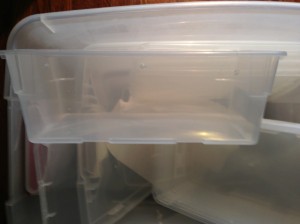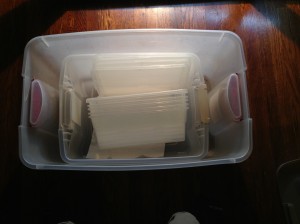I am sure many of you, especially East Coasters, have heard the news about Hurricane Sandy coming and for those of you who have cats, dogs, and exotic pets, I am sure you are concerned. As such, I thought I’d share with you our emergency plan.
Okay, okay…I know I said that my next posts would be on our Costa Rica trip or on rattlesnakes or this or that. And that was in May 2012. We are already in October. What happened this year is that I have been REALLY busy with work as I am still climbing up the ladder, and I have been spending my limited free time doing things for my animals and hanging out at the Reptile-Parrots Forum where I am a moderator.
Anyway, we live a bit inland and have never been forced to evacuate. This wouldn’t really fully apply to those who have to evacuate. I will share with you what I would do if I were in your situation at the end of the post. Again, I cannot speak from experience on this.
Last year’s Hurricane Irene was the first kick in the butt for us to make us realize that hurricane gail force wind is scary, can cause power outages and tornadoes, and can cause loss of life and property. We didn’t have a generator in that storm and got lucky that we weren’t one of the ones to be affected with a power outage. Many of those in surrounding towns and areas were flooded and without power for days. Some of our neighbors (on the same street!!) had trees fall on their houses. Local roads were impassible for over a day as trees were just scattered across the roads.
Here are the steps we have taken to be prepared for future storms, including Hurricane Sandy:
- The first step is to make sure that you and your animal kids do not get flooded out. Therefore, we ensured that our electric powered sump pump is operating effectively. The sump pump that came with our house when we first bought it was old and ended up breaking down during a storm prior to Hurricane Irene. Our basement flooded by a foot! The backflow valve on the sump pump did not operate correctly and caused a nightmare. During that storm, we got to Home Depot in the knick of time, and was able to set up a new sump pump and get the water back out. However, this it is not ideal to wait for that situation because they will sell out of sump pumps, generators, and other supplies very early. Yesterday we saw lines by the generators where people were waiting in the hopes that another generator supply would arrive.
- To support an electric powered generator, we needed to make sure we had a contingency plan if the electric were to go out. As such, we finally bought a Champion generator a few months ago from BJ’s for about $300. We also made sure we have enough gas and oil to run a generator for an extended period of time, and that we have enough heavy duty outdoor safe cables to run to the sump pump and potentially to reptile lights.
- We also made sure we have enough flashlights and batteries as well as candles if need be.
- We keep a supply of reptile-shipping heat packs and/or hot hand warmers and soft blankets to wrap around them (so as not to burn the animals), in case the above plans do not provide enough heat and warmth for the animals.
- Because we have many snakes and lizards, we bought multiple sized Tupperware containers that seal tight, based on the size of each lizard and snake. Further, in advance of the last storm, we drilled holes to provide air to the tops and sides of the containers. Finally, we keep a supply of duct tape to seal the tops. The snakes WILL get out if it is not sealed; trust me! Of course, we have cat carriers on hand for the cats as well.
- In advance of the storm, we stock up on food for ourselves and our animals. We bought additional water for ourselves and ice in case we need to use it to extend the life our perishables. As a last resort, we bought canned collard greens, mustard greens, and turnip greens (canned in water) for the vegetable eating lizards. Of course, we have dry and wet cat food, oxbow chinchilla pellets, live feeders, etc.
- During the storm, when the weather starts going awry, we put the animals in the tubs with a soft blanket and bring them to our lower level to the most interior and safest portion of the house. It’s better safe than sorry because you never know if a tree is going to fall or if a tornado will come into fruition. We use our judgment in determining whether we need to add the wrapped heat pack to each container.
Fortunately, nothing has ever gone past that point (*knocks on wood*). However, the generator is our back up for a power outage and the food is as well. When it is safe to return the animals to their enclosures, we do.
I suppose if you live in an area where you would have to evacuate, you could take some of the same steps. Get containers ready with heat warmers. Get canned food and other non-perishables ready to go. Some shelters will let you bring your pets and you will need this stuff. If you are not going to a shelter, you can probably go to a family member’s house outside of the emergency area and you will need back up supplies to take care of your pets in those areas as they will likely not have these. Please don’t leave your animals behind!
Hopefully all this planning will pay off and that our family (including our pet family) will stay safe when Hurricane Sandy arrives.





Good luck Chris… hope the storm doesn’t affect you too badly, I think we are going to lucky and the storm will go slightly north of us.
We saved them! We froze to death but we saved them! How are you doing?
Pingback: We finally have power again, 9 days after Hurricane Sandy, and enduring 30 degree temps | Exploring Exotic Species and Average House Cats
Pingback: Follow Up – After the Storm: How to Prepare Your Pets for an Emergency Situation | Exploring Exotic Species and Average House Cats